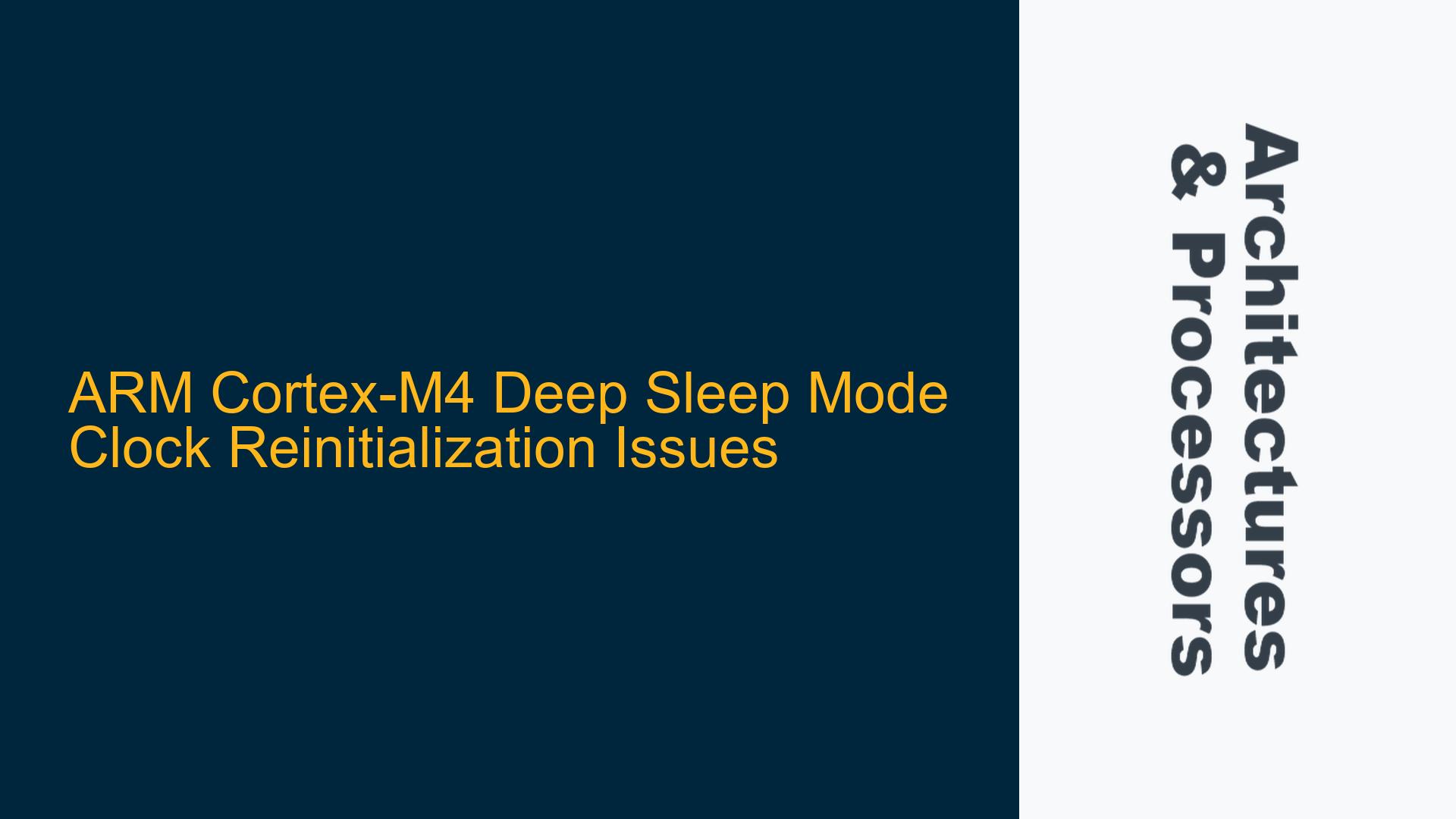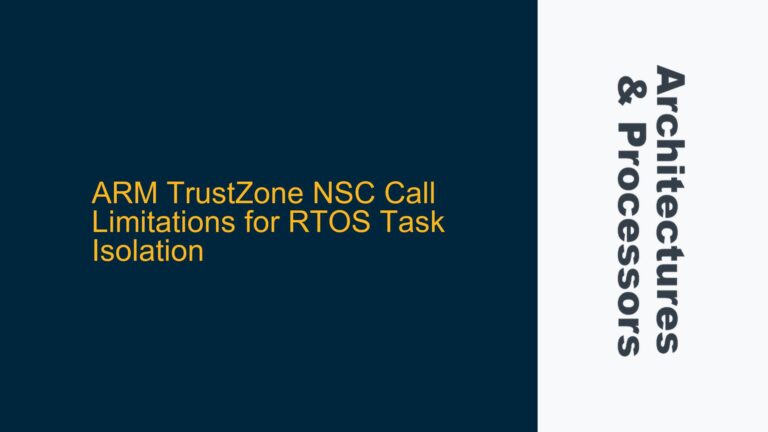HSE Clock Source Behavior During Deep Sleep and Wake-Up
When utilizing the High-Speed External (HSE) clock source on an STM32 Cortex-M4 microcontroller, entering deep sleep modes such as STOP or Standby can lead to unexpected behavior regarding the system clock source. During deep sleep, the HSE is typically turned off to conserve power, and upon waking up, the microcontroller defaults to the High-Speed Internal (HSI) clock source. This transition occurs because the HSI has a significantly faster startup time (approximately 2 microseconds) compared to the HSE (approximately 2 milliseconds). However, this automatic switch raises a critical question: does the system automatically revert to the HSE clock source once it stabilizes, or is manual reinitialization required?
The confusion stems from the differing behaviors of the STOP and Standby modes. In Standby mode, the microcontroller undergoes a full reset upon waking up, which includes reinitializing the clock source as part of the reset sequence. This means that if the HSE was configured as the system clock before entering Standby mode, it will be reinitialized automatically after wake-up. However, in STOP mode, the microcontroller does not reset. Instead, it resumes execution from the point where it entered sleep. This means that the clock source remains as HSI after wake-up, and the HSE must be manually reinitialized if it is to be used again.
The distinction between these two modes is crucial for developers aiming to optimize power consumption while maintaining system performance. Failing to reinitialize the HSE in STOP mode can lead to the system running on the slower HSI clock, which may not meet the timing requirements of the application. Conversely, unnecessary reinitialization in Standby mode can waste processing cycles and power.
Clock Source Transition Timing and Manual Reinitialization Requirements
The core issue revolves around the timing of clock source transitions and the need for manual reinitialization of the HSE after waking up from STOP mode. The HSE, being an external clock source, relies on an external crystal or oscillator, which takes time to stabilize. The HSI, being internal, is always available and starts up almost instantaneously. This difference in startup time is the primary reason the microcontroller defaults to the HSI after waking up from deep sleep.
In STOP mode, the microcontroller preserves the state of the system, including the contents of the registers and RAM. This means that the clock configuration registers retain their previous values, but the actual clock source is switched to HSI. Therefore, even if the HSE was configured as the system clock before entering STOP mode, the system will not automatically switch back to the HSE after wake-up. This behavior necessitates manual intervention to reconfigure the clock source.
The process of reinitializing the HSE involves several steps. First, the HSE must be enabled by setting the appropriate bit in the RCC (Reset and Clock Control) register. Once enabled, the system must wait for the HSE to stabilize, which can take up to 2 milliseconds. After stabilization, the system clock source can be switched back to the HSE by configuring the RCC registers accordingly. This process must be carefully timed to ensure that the system does not experience any clock glitches or instability during the transition.
In Standby mode, the situation is different. Upon waking up, the microcontroller undergoes a full reset, which includes reinitializing the clock source. If the HSE was configured as the system clock before entering Standby mode, the reset sequence will automatically reinitialize the HSE. This means that no manual intervention is required, and the system will resume operation with the HSE as the clock source.
Implementing Clock Reinitialization in STOP Mode for Optimal Performance
To ensure optimal performance and power efficiency, developers must implement a robust clock reinitialization routine when using STOP mode on an STM32 Cortex-M4 microcontroller. This routine should be executed immediately after waking up from STOP mode and should include the following steps:
-
Enable the HSE: Set the appropriate bit in the RCC register to enable the HSE. This step initiates the startup process of the external clock source.
-
Wait for HSE Stabilization: Poll the RCC register to check the status of the HSE. The system should wait until the HSE is fully stabilized before proceeding. This typically takes up to 2 milliseconds.
-
Switch the System Clock Source to HSE: Once the HSE is stable, configure the RCC registers to switch the system clock source back to the HSE. This step ensures that the system operates at the desired clock frequency.
-
Verify the Clock Source: After switching the clock source, verify that the system is indeed running on the HSE. This can be done by checking the RCC registers or by measuring the system clock frequency.
-
Adjust System Timings if Necessary: If the system timings were adjusted to accommodate the slower HSI clock during the wake-up process, they should be readjusted to match the HSE clock frequency.
Implementing this routine ensures that the system operates at the desired clock frequency after waking up from STOP mode, thereby maintaining optimal performance. Additionally, developers should consider the power consumption implications of using the HSE versus the HSI. While the HSE provides higher accuracy and stability, it also consumes more power. Therefore, the choice of clock source should be balanced against the power requirements of the application.
In conclusion, understanding the behavior of the HSE and HSI clock sources during deep sleep modes is crucial for developing efficient and reliable embedded systems on the STM32 Cortex-M4 microcontroller. By carefully managing the clock source transitions and implementing appropriate reinitialization routines, developers can ensure that their systems operate smoothly and efficiently, even after waking up from deep sleep.






